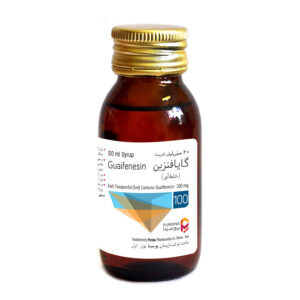Description
How Supply
Each 5 ml syrup contains 4 mg Bromhexine HCl. 60 ml elixir in a bottle.
Category
Mucolytic
Mechanism of Action
Bromhexine is an oral mucolytic agent. Bromhexine acts on the mucus at the formative stages in the glands, within the mucus-secreting cells. Bromhexine disrupts the structure of acid mucopolysaccharide fibres in mucoid sputum and produces a less viscous mucus, which is easier to expectorate.
Pharmacokinetics
Bromhexine hydrochloride is rapidly absorbed from the gastrointestinal tract and undergoes extensive first-pass metabolism in the liver. Its oral bioavailability is stated to be only about 20%. It is widely distributed to body tissues and is highly bound to plasma proteins. About 85 to 90% of a dose is excreted in the urine mainly as metabolites. It has a terminal elimination half-life of up to about 12 hours. Bromhexine crosses the blood brain barrier and small amounts cross the placenta.
Dosage and Administration
Adult Dosage:
Bromhexine is usually given orally in a dose of 8 to 16 mg three times daily.
Pediatric Dosage:
Children under 6 years: Consult with physician
Children 6 – 12 years: 4 mg 3 times daily
Pregnancy and breast feeding
There is no data on the use of bromhexine in pregnant women. The effects, if any, on the developing fetus are unknown. Until more information is available, bromhexine should only be used during pregnancy if the maternal condition justifies the potential risk to the fetus.
Available evidence and/or expert consensus is inconclusive or is inadequate for determining infant risk when used during breastfeeding. Weigh the potential benefits of drug treatment against potential risks before prescribing this drug during breastfeeding.
Side Effects
Gastrointestinal Effects: nausea, epigastric pain, vomiting, and diarrhea
Dermatologic Effects: skin rash, urticaria,
Hepatic Effects: Transient elevations in serum aminotransferase levels
Neurologic Effects (Central nervous system): dizziness and headache
Precautions
Since mucolytics may disrupt the gastric mucosal barrier bromhexine should be used with care in patients with a history of peptic ulcer disease (gastric ulcer).
Care is also advisable in asthmatic patients.
Clearance of bromhexine or its metabolites may be reduced in patients with severe hepatic or renal impairment.
Bromhexine may increase the amount of antibiotic penetration.
Drug interactions
Bromhexine may increase the concentration of concurrently administered antibiotics in bronchial secretions. No clinically relevant interactions with other medications have been reported.
Storage
Store below 30˚c, in a tight container. Protect from freezing. Keep out of reach of children.



